
By Justin Black of Spycraft101
At the onset of the Second World War, the British Special Operations Executive formed several different research and development branches spread throughout England. One branch, Station IX, was located at the Frythe estate near Welwyn Gardens in Herefordshire. The Frythe, as it is called, has history dating back to the 13th Century, and the main estate building was constructed in 1846. When Station IX moved in, they quickly built numerous temporary buildings around the estate as well as occupied the entire main building and several pre-existing outbuildings.
An enormous variety of devices, gadgets, and weapons were developed at Station IX. These included radios for resistance fighters, time-delayed pencil detonators, magnetic limpet mines for sabotaging ships in harbor, and possibly even chemical and biological weapons. Those concepts that were considered successful designs were then built either at Station XII nearby or contracted out to private companies for large-scale manufacture.
Engineers at Station IX took to naming many of their projects with the prefix “Wel” as a tribute to the station’s location. These include the Welbike (a collapsible motorcycle meant to be air-dropped), and the Welfreighter (a submarine that could clandestinely transport up to a ton of cargo). There is no question that Station IX left an indelible mark on sabotage and espionage operations in both the European and Pacific theaters of World War II.
Here I will cover five different firearms developed at Station IX.
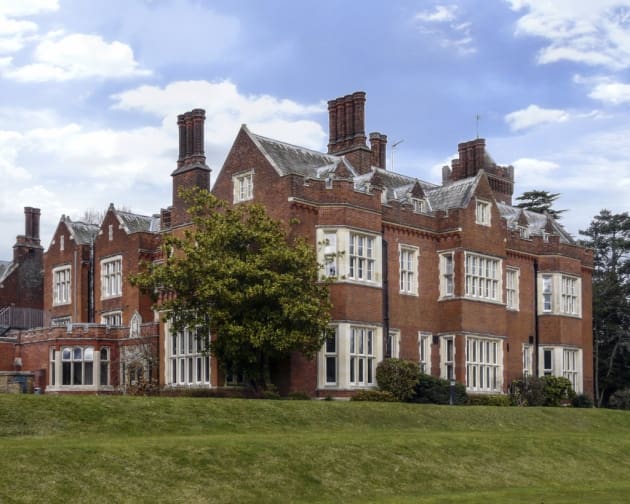
The Welgun
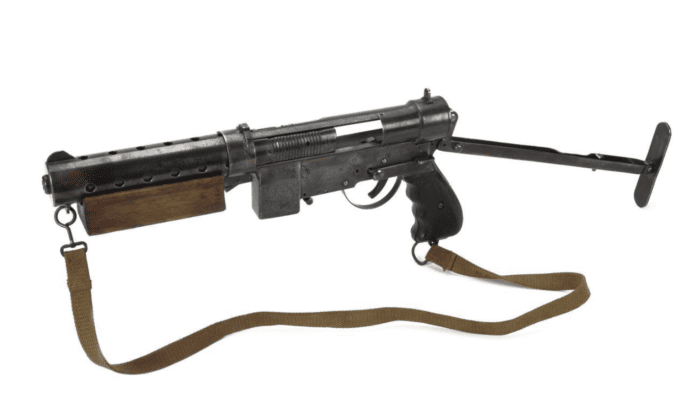
The Welgun is a prototype submachine gun developed by Station IX beginning in the summer of 1942. It was envisioned as a replacement for the Sten Mk IIs currently in service at the time. Chambered in 9mm Parabellum, it fired from a 32-round Sten gun magazine at a rate of 500 rounds per minute. During testing it could reliably feed 9mm ammunition produced in American, British, or German factories, a valuable advantage when operating behind enemy lines when resupply could be unpredictable at best.
The Welgun is notable for its lack of a charging handle. The user cocked the weapon by gripping the serrations on both sides of the bolt and pulling it to the rear. The weapon fired from an open bolt, like many of the submachine guns of that era.
Six prototypes were produced at Station IX by August 1942. Three were then sent to the Ordnance Board, and three to the Small Arms School for testing and evaluation. The Welgun performed reliably and scored well against the Sten Mk II and Mk IV. The Birmingham Small Arms company also evaluated the Welgun and was willing to produce it in large quantities. They estimated they could begin producing Welguns by April 1943 at a rate of 5,000 per month. An estimated 60,000 to 100,000 were required for the war effort.

However, for reasons that are not entirely clear, it was not adopted by the Ordnance Board, who decided to continue with the production and deployment of the Sten submachine gun. The Ordnance Board did recommend that the Welgun’s folding stock, foregrip, and overall balance be adapted to other future designs, as it had scored very highly in these categories during testing.
Although the Welgun was never adopted in large numbers, the six prototypes remained in the SOE’s inventory. At least one of them saw action during the war. SOE operative Peter Kemp carried a Welgun and a Colt 1911 on his mission into Albania in July 1943. Kemp used it during the ambush of a lone German staff car traveling on an empty country road. After the initial barrage, which killed three of the car’s four occupants, the Welgun jammed and Kemp transitioned to his 1911. He had given the Welgun to an SOE armorer just prior to deployment and thought the armorer had incorrectly adjusted the tolerances.
The SOE team, codenamed Stepmother, used locally procured mules for transport. Kemp’s Welgun was eventually lost when the mule caravan was discovered by a German patrol and the mules abandoned as the team members escaped. One wonders if it is rusting away somewhere in Albania right now.
The Norm Gun
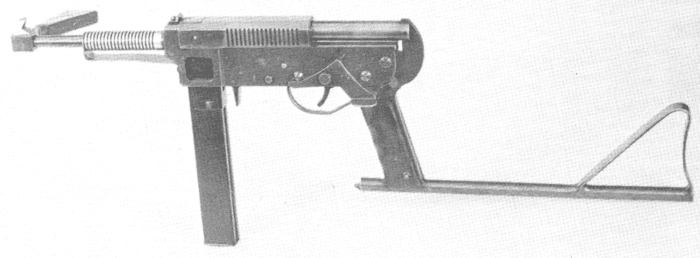
The Norm Gun was an early experiment by Station IX to produce a 9mm submachine gun which could replace the Sten SMGs in service at the time. It was designed by Eric Norman, who named it after himself. This was the only weapon to come from Station IX which did not bear the “Wel” prefix, possibly because it did not make it very far in initial development trials. Only two prototypes of the Norm Gun are known to exist. One is held by the National Firearms Centre in Leeds, England. The other is at the Imperial War Museum. Neither is currently on display, leading to a dearth of pictures of the Norm Gun.
Like the Welgun, the Norm Gun fired from an open bolt and utilized 32-round Sten magazines. But from there it differed drastically. The bolt housing on top of the receiver resembled a modern pistol slide, and when pulled to the rear left an astonishingly large gap into the action, approximately four inches. This easily allowed dirt and debris to enter the action during normal field use and would have been a major detriment had the weapon moved forward in trials. The wire stock mounted at the bottom of the pistol grip could be removed but not folded. The Norm Gun was equipped with a selector for switching to fully automatic fire but did not have a traditional safety.

The Norm Gun’s most unique feature is inarguably the wooden foregrip mounted horizontally on the right side of the barrel, next to the muzzle. The apparent intended use was for a right-handed shooter to reach under the barrel with his left hand and hold the foregrip during firing. Some reporting indicates this resulted in excellent stability during fully automatic firing, but it represents a major departure from the handling of nearly all other weapons during that era and would have required additional training and familiarization.
Unlike the subsequent Welgun, the Norm Gun was not selected to proceed to additional trials by the Ordnance Board or the Birmingham Small Arms Company. Although initial reports were that the weapon was reliable, it was made with milled components which were significantly more expensive and time-consuming to mass-produce. It has now been relegated to history as one of many unique experiments in the world of firearms development.
The Sleeve Gun

The official SOE catalog referred to this as a “short length, silent, murder weapon”. The sleeve gun was a variant of the better-known Welrod pistol; it was a simple suppressor tube with a single .32 ACP caliber round loaded into the breech before concealing up the user’s sleeve. A hole at the rear of the gun allowed a lanyard to be attached. The lanyard could be looped around the elbow, keeping the sleeve gun concealed until it was needed. With a rubber band providing tension, the Sleeve Gun would disappear back up the user’s sleeve as soon as they let go of it after firing.
Rather than a conventional trigger there was a simple knurled switch that was pushed forward and then back again with the thumb to fire the round. What appears in the photo to be front and rear sights is actually the firing switch and trigger mechanism housing. The firing switch is at the very front of the weapon, and the housing runs to the rear to impact the primer. The firing switch acted as a safety to prevent accidental or negligent discharge while still concealed up the sleeve. The intended use was simply to press the sleeve gun directly up against the target and fire the round. The suppressor muted the shot, and the lack of an ejector mechanism meant the spent casing remained in the weapon, leaving little evidence of what had transpired in the immediate moments afterwards. The thick rubber baffles inside the suppressor created an extremely tight seal around the bullet but would need to be replaced after every 15 rounds or so due to damage occurring during firing.
The weapon is extremely slow to reload and was never intended to provide a multi-shot capability during a single engagement. Due to its heft and weight, as well as its single-shot capability, the Sleeve Gun could also function as a truncheon if necessary.

SOE produced MKI and MKII variants, with the primary difference being the placement of the cocking lever on the MKII, which was lower-profile and reduced the potential for snagging inside the agent’s sleeve. The sleeve guns were manufactured by the Birmingham Small Arms company, which had a close working relationship with SOE throughout the war. The Sleeve Gun appeared as item number 254 in the Top Secret classified catalog “Descriptive Catalogue of Special Devices and Supplies,” published in 1945 by the War Branch.
Unlike the better-known Welrod, it is unclear if or when any of the sleeve guns were used in action. Only three examples are currently known to exist. One is in a museum in Norway, and two others are at the National Firearms Centre in Leeds, England.
For more information on the Sleeve Gun, see Anders Thygesen’s outstanding research at http://www.timelapse.dk.
The Welrod
Easily the best-known of all of Station IX’s firearms is the Welrod suppressed pistol, also referred to in official documentation as the Hand Firing Device. Produced in several variants in .32ACP and 9mm Parabellum, it saw extensive deployment and use in the European theater during World War II. After the Welrod was developed at Station IX, it was manufactured by the Birmingham Small Arms company (BSA), and possibly other manufacturers as well. Due to its covert nature, paper records were deliberately kept to a minimum, and to this day BSA cannot confirm exactly how many Welrods they produced for the Special Operations Executive. Serial numbers exist into the 14,000 range, but it is not clear if they were all sequentially manufactured.
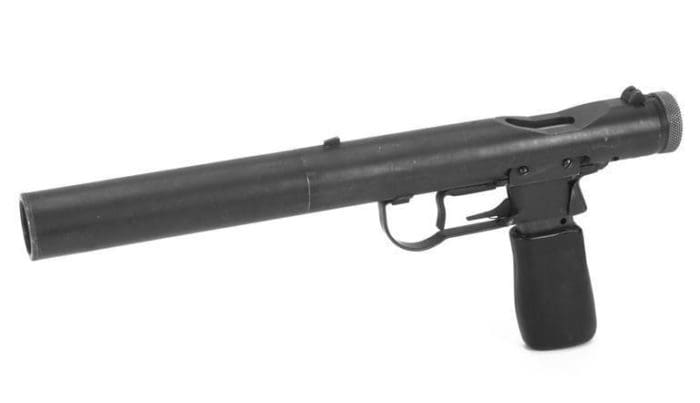
From the outset, the Welrod was both designed for and intended to be used as a contact-distance weapon. The official manual described the .32ACP version as accurate up to 25 yards, the 9mm version up to 30 yards. But the pistol’s nose cap is hollow to specifically facilitate contact-distance use. Ideally the operative would get close enough to the target to press the muzzle directly into them before pulling the trigger.
The Welrod was designed by Major Hugh Quentin Alleyne Reeves, one of Station IX’s most talented and creative engineers. He is also credited with designing the original Sten gun’s suppressor, and development of the “Sleeping Beauty” one-man submersible canoe. On a side note, Major Reeve’s work in noise suppression continued after World War II, until he met a tragic end in 1955. Working to suppress the noise generated by jet engines, he was sucked into the intake of a Hawker Hunter jet engine while performing tests on the ground and killed.
The Mk I prototype that would become the Welrod was radically different than the finished product many of us are familiar with today. It featured a traditional external bolt handle, and an internal magazine that was loaded with five rounds from the top down, similar to a Mauser C96 pistol. The trigger was not in the traditional location below the barrel, but instead on the left side of the breech, intended to be pushed forward by the right thumb. By June 1943, significant redesigns led to the more recognizable Mk II and Mk IIa .32ACP pistols. The redesigned Welrods had a detachable magazine adapted from Colt 1903 pistol magazines and sheathed with rubber to function as the pistol grip. The trigger was moved back underneath the breech in a more conventional design, and the bolt handle was replaced by a knurled knob at the rear of the breach which could be pulled backwards, rotated 90 degrees, and then pushed forward again to eject the spent round, load the next round, and cock the firing pin. This resulted in a greatly reduced profile with easier concealment, while still being fast to reload for a manually cycled weapon.
The Mk I 9mm Parabellum Welrods featured two notable differences from the .32ACP versions. A trigger guard was installed, which allowed the pistol to be more safely concealed. The .32ACP version could not be tucked into a waistband while loaded for obvious reasons. The 9mm Welrod also featured a detachable suppressor, which again allowed for much easier concealment leading up to an operational act. The pistol could be fired without the suppressor if necessary, but there were far better handguns available for unsuppressed fire.

Welrods were used operationally in Denmark on many occasions, according to research conducted by Anders Thygesen. It was used by the Danish resistance primarily in the killing of informants among the Danish population who were working for the Nazis.
In December 1943, the Welrod was used by SOE agent Svend Nielsen to dispatch a German sentry on duty at the Kastrup Airport. Nielsen’s mission was to infiltrate the airport and steal a newly developed bombsight from a parked German aircraft. Nielsen was discovered but was able to escape, although his partner on the mission was killed.
On January 3rd, 1944, a Nazi collaborator named Mr. Nordahl was attacked in his home by Danish Resistance members carrying Welrods. Two men pinned him to the floor and shot him in the head. The pistol was so quiet that his wife did not hear the commotion from the next room over. Nordahl died in the hospital three days later without ever regaining consciousness.
On September 17th, 1944, Mrs. Frederikke Rungager was killed while recuperating in Aarhus County Hospital. A nurse entered her private ward that day to find her dead from a gunshot wound to the head. The killer was never identified.
Even the Nazis themselves took to using captured Welrods against the Danish resistance members. At the direction of the legendary Otto Skorzeny, a group of SS officers known as the Peter Group (after their leader’s alias) carried out assassination missions against prominent Danes as retribution for attacks by the Resistance. Between February 1944 and January 1945, the Peter Group assassins killed at least three Danes and wounded another in targeted assassinations. These included a newspaper editor, a Parliament member, and a prominent attorney.
Welrods were also provided by SOE to a few U.S. personnel on Jedburg teams. The OSS received at least two Welrods for testing and found it to be an excellent weapon overall. However, they continued to stick with the Hi Standard Model HD MS .22 pistol as their primary silenced pistol throughout the war and beyond.
After World War II, the Welrod remained in a number of inventories and popped up occasionally around the world.
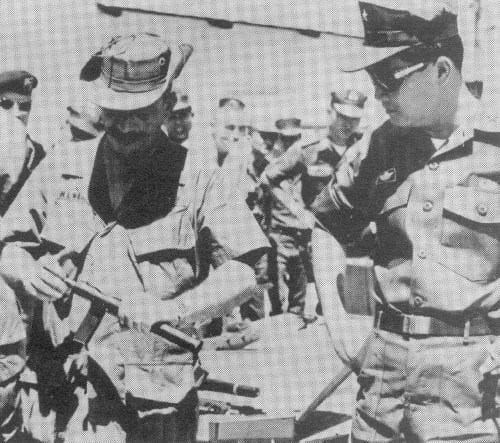
In the late 1950s (and likely beyond), the US Army Special Forces Detachment Berlin was issued Welrods and US-made High Standard Model HD MS suppressed pistols. On one occasion they were given a mission to perform a vulnerability assessment on West Berlin’s firebrand Mayor Willy Brandt (who would later serve as the Chancellor of West Germany). Tasked to come up with methods that communist infiltrators might use to assassinate Brandt, the detachment surreptitiously tailed him for several weeks. They eventually presented four likely scenarios for assassinating him. One of these involved using a Welrod pistol with the magazine removed and rolled up inside of a newspaper in order to get close enough for a killing shot. The Detachment also carried the Welrod on missions up to the Berlin Wall beginning in the early 1960s, in case it was necessary to dispatch an East German sentry or guard dog.
There is some evidence that it was used by British forces in Northern Ireland during the Troubles, and during the Falkland Islands war against Argentina. The US Central Intelligence Agency maintained a number of 9mm Welrods in their arsenal through at least 1965 and possibly beyond. The commandos of Military Assistance Command Vietnam Studies and Observations Group used Welrods in Vietnam, along with several other suppressed weapons. And it may have even been issued as late as 1991 during the Gulf War against Iraq.
To this day the Welrod garners attention through its appearance in video games and film. Despite its archaic design and appearance, few weapons have surpassed its capabilities as a close-in tool for assassinations.
For more information on the Welrod, see Anders Thygesen’s outstanding research at http://www.timelapse.dk.
The Remote Control Pistol

The final weapon from Station IX is not a new firearm design in the strictest sense. Instead, it is a novel method for carrying and firing a Colt 1903 pistol from concealment. The creative nature of this concept marks it as a signature weapon from Welwyn. The Remote Control Pistol was developed as a last-ditch defensive measure for agents operating behind enemy lines.
Mounted on the waist, and pointed forward, a cable went from the trigger up the sleeve to an actuator attached to a finger ring. The Mk II variant featured a bulky cover plate which hampered concealment but provided a more stable brace for the pistol when fired. The circular cuts at the bottom of the cover plate allowed for easier reloading of the pistol without removing the harness.
On December 27th, 1941, as part of Operation Chilblain, Karl Bruhn and Mogens Hammer parachuted into Denmark to establish SOE’s initial presence and operational cell in Denmark. Unfortunately, Bruhn’s parachute failed to open when the snap hook on the static line inside the aircraft detached. He plummeted to the ground and died on impact. German forces occupying Denmark found his body and equipment and were shocked to find this Mk I Remote Control Pistol in one of his bags.
At the time, Danish and German police standard procedure for effecting an arrest was to lay a hand on the shoulder of the suspect while ordering them to put their hands in the air. In a situation like this, the RCP was a perfect weapon to counter any attempted arrest. Police forces in both countries changed their procedures after the discovery of the RCP.
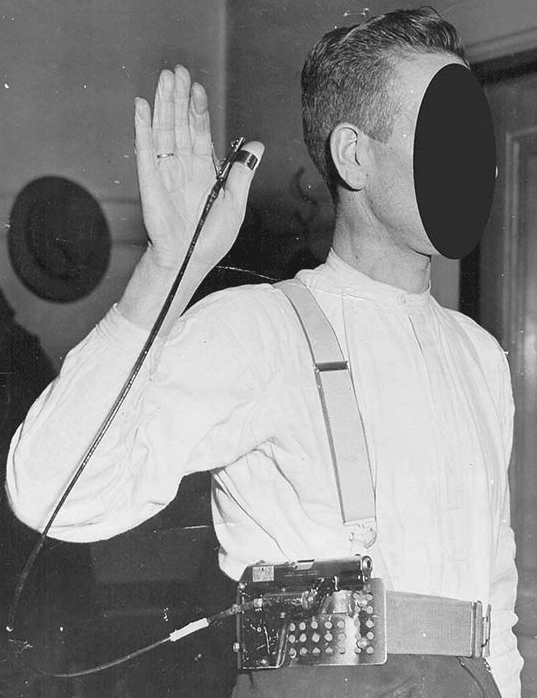
Approximately 40-50 RCPs were produced under contract by the Wilkes Brothers gun shop in London for the SOE. An SOE document from near the end of World War II lists the inventors of the Remote Control Pistol as J.R.V. Dolphin (the commander of Station IX) and E. Norman (inventor of the Norm Gun).
It is believed that Czech agents were also issued at least one RCP for use during Operation Anthropoid in Prague, Czechoslovakia. .32ACP caliber shells were found in the aftermath of the attack on the target of the operation, SS Officer Reinhard Heydrich, although it is unknown exactly how they were fired.
The US Office of Strategic Services also developed a system similar to the Remote Control Pistol. The OSS version used a Colt .25ACP pistol mounted high up under the operative’s arm. A device looped around the wearer’s upper chest and triggered the weapon to fire when the user took an intentionally deep breath. The OSS version never made it out of the development stage. This SOE version was a substantially better design in almost all respects.
Conclusion
With the end of hostilities in mid-1945, Station IX’s work came to a close. The Special Operations Executive was officially dissolved in January 1946. The Frythe estate near Welwyn was eventually used as a research facility by Unilever and later GlaxoSmithKline. It has now been converted into a housing development.
While many SOE personnel returned to the civilian occupations they had held before the war began, nearly 300 personnel were brought into the Special Operations Branch of MI6. MI6 was particularly interested in those personnel involved in research and development, so many of the Station IX engineers, scientists, and technicians found a second calling, developing tools and weapons for a new generation of operatives in the years that followed, as the Iron Curtain slammed down across Europe and the Cold War began.
References:
Canadian War Museum, Ottawa, Ontario, Canada. https://www.warmuseum.ca/collections/
Imperial War Museum, United Kingdom. https://www.iwm.org.uk/collections/item/object/30029480
TFB TV. 26 April 2017. Top Secret WWII Machine Guns: The Norm and Welgun. https://www.youtube.com/watch?v=xWfvixdbHgk
Thygesen, Anders. http://www.timelapse.dk/
Lewis, Alex. 26 April 2017. New Era for Welwyn’s Former Commando Gadget Lab. Welwyn Hatfield Times. https://www.whtimes.co.uk/news/new-era-for-welwyn-s-former-commando-gadget-lab-1-4976306
Stejskal, James. December 2017. Cold War Warriors: The Men of Special Forces Detachment Berlin. American Rifleman Magazine. https://www.americanrifleman.org/articles/2017/11/27/cold-war-warriors-the-men-and-guns-of-special-forces-berlin/
Weaponsandwarfare.com. October 4th, 2016. Welgun and Welrod. www.weaponsandwarfare.com

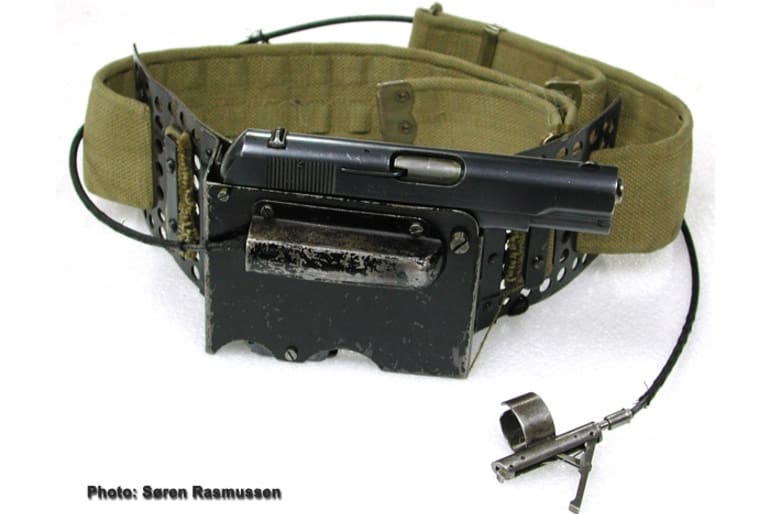



I like historical articles like this. More please, Mr. Black.
Hobbittses are tricksey, they are, my precious.
I would love a Welrod, even if it had a fake suppressor
Informational and fun to read…
I second Haz’s request for more articles like this one.
There’s a whole streaming series on Station IX. It’s damned interesting.
Easily the best part of it though are the conversations they recorded after bringing in captured Nazi scientists and letting them roam around Welwyn after the war. Obviously everything was recorded and that
should have been obvious but the war was over and these people were scientists, not clandestine agents.
A bunch of that stuff is still classified.
SOFREP has also had some good articles on the topic.
Awesome stuff. I want a sleeve gun. Not because it’d be useful, but just because.
Sleeve gun/Sleeve truncheon.
It’s even better. You shoot the big guy in the gut and then beat one of his slower friends to death.
You know, get the attention of the others.
😀 I like the way you think.
I wonder how loud that sleeve gun was. I wonder how quiet it could be today.
There isn’t a lake deep enough.
Excellent article ! Thank you.
Wow that was a history lesson.
The Cane gun was not mentioned however.
I have in my possession most of the aforementioned firearms listed “I” also have a Cane gun.
Welwyn Gardens is in Hertfordshire, not Heresford.
It is in Welwyn, NOT Welwyn Garden City.